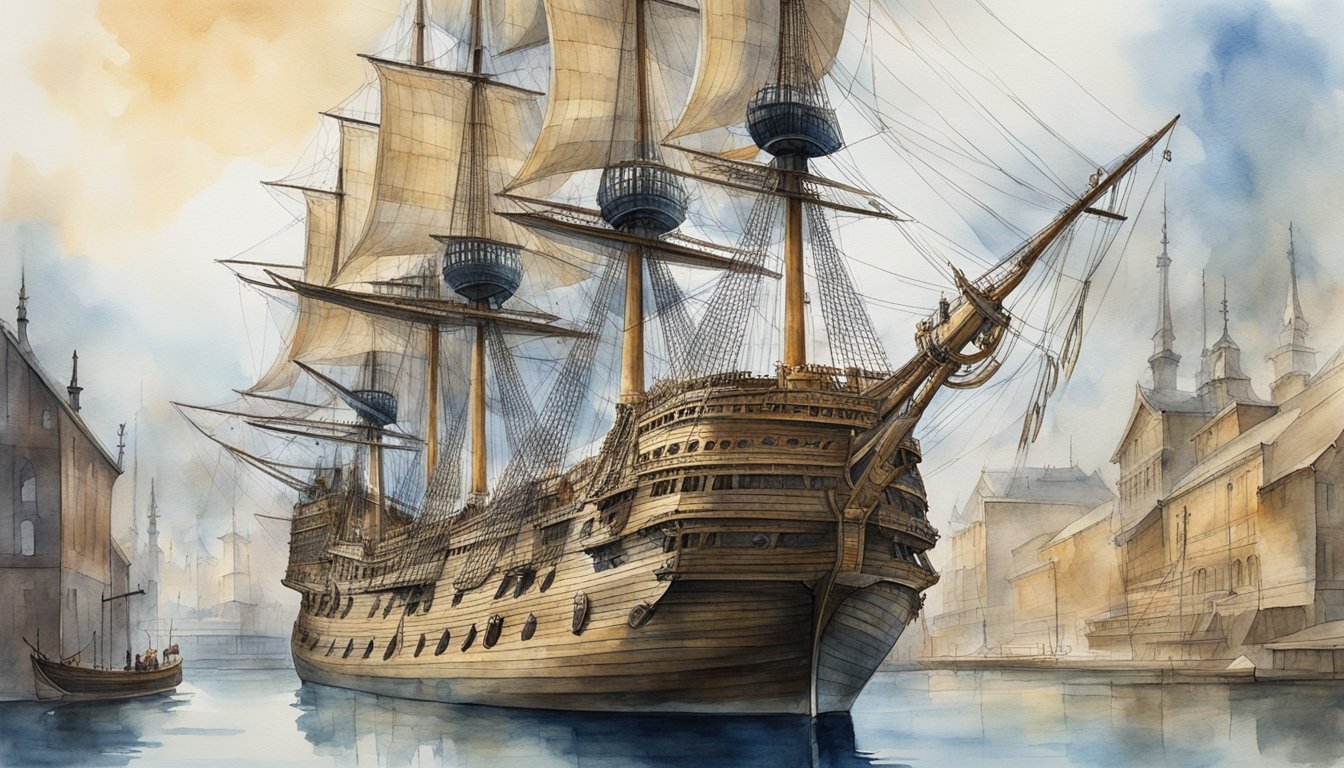The Vasa Warship’s Ill-Fated Journey
Launch and Sinking
In 1628, the Swedish warship Vasa was launched as a powerful addition to the Swedish Royal Navy. The warship was equipped with 64 bronze cannons, making it one of the most powerful ships of its time. Unfortunately, the Vasa’s glory was short-lived. On its maiden voyage on August 10, 1628, the ship sank just 1,300 meters (1,400 yards) into its journey, in Stockholm harbor.
Design and Stability Issues
The ambitious size and design of the Vasa led to severe stability problems. The ship was top-heavy due to an additional gun deck carrying bronze cannons. Furthermore, the Vasa’s width was not sufficient to support the extra weight, and the ship’s high center of gravity contributed to its instability. The overall outcome was a disastrous combination that led to the sinking of this formidable Swedish warship.
The Fatal Maiden Voyage
On the day of its tragic maiden voyage, the Vasa was showing signs of instability from the start. Despite this, the captain chose to set sail. As the ship left harbor, it was hit by a gust of wind, causing it to lean dangerously. With water gushing into the open lower gun ports, the Vasa began to sink rapidly. The crew desperately tried to counteract the unstable situation, but their efforts were in vain. The sinking of the Vasa claimed the lives of at least 30 out of the 150 people on board.
The Vasa’s disastrous journey serves as a cautionary tale for future naval construction endeavors. The ship’s unstable design and the decision to sail onward despite glaring issues hold valuable lessons for understanding the importance of proper engineering and risk assessment. Today, the Vasa’s remains can be visited at the Vasa Museum in Stockholm, offering a remarkable glimpse into 17th-century maritime history.
The Vasa’s Legacy and Preservation

Archaeological Recovery
The Vasa warship, a 17th-century Swedish vessel, sank on its maiden voyage in 1628. It remained in the Baltic Sea for over three centuries, until it was raised in 1961. The recovery was an archaeological feat—a collaboration between maritime archaeologists, engineers, and the Swedish Navy. Many valuable artifacts, including the ship’s bronze cannons, were also salvaged during this recovery process.
Museum and Exhibition
After the recovery and a lengthy conservation process, the ship and its artifacts were transported to the Vasa Museum in Stockholm. The museum, specifically built to house the Vasa, attracts tourists from all over Europe, making it one of Sweden’s most popular tourist attractions. The wooden structure of the Vasa is remarkably well-preserved, offering a glimpse into 17th-century shipbuilding technology. In addition to the ship itself, the museum also displays the salvaged artifacts and a film about the Vasa’s history.
Educational and Cultural Impact
The Vasa’s recovery and preservation not only provides valuable insights into maritime archaeology but also contributes to Sweden’s cultural heritage. As a former flagship of the Swedish navy, the Vasa represents a significant moment in the country’s naval history. The ship’s gun deck, gundeck, and wooden structure serve as educational tools, offering insight into the technologies and techniques used in 17th-century shipbuilding.
The Vasa Museum plays an essential role in fostering public interest in history and archaeology, with numerous exhibitions, workshops, and interactive displays that cater to visitors of all ages. The museum’s effort to preserve and showcase the Vasa has helped ensure this maritime treasure remains accessible to generations to come.

